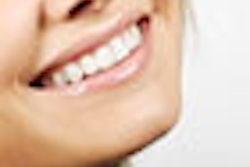Does changing occlusal plane angle affect the attractiveness of a smile? Yes, according to researchers from the Eastman Dental Institute at University College London (Angle Orthodontist, September 20, 2011).
But it appears to bother dental practitioners more than the patients themselves, the researchers found.
To determine the influence of the occlusal plane angle on smile attractiveness as perceived by a group of 66 adult orthodontic patients and 66 dentists, the researchers recorded changes in vertical tooth position at different occlusal plane angles using a maxillary model mounted on an articulator.
Then they photographically manipulated the data to produce a computerized prediction of the appearance of the smile at five different occlusal plane angles: 0°, 5°, 10°, 15°, and 20°. Finally, the five developed photographs were assessed by participants.
Alterations in the occlusal plane angle did affect relative smile attractiveness for both patients and dentists; however, "patients were more tolerant of these changes than dentists," the researchers wrote.
For patients, the 10° smile was rated better than the 0° and 20° smiles (p < 0.01); for dentists, the 15° smile was rated better than the 0° and 20° smiles (p < 0.01). The 5°, 10°, and 15° smiles were indistinguishable for patients, while the 10° and 15° smiles were indistinguishable for dentists.
"This suggests that large changes in the occlusal plane angle would affect relative smile attractiveness, and small changes are unlikely to affect smile attractiveness," the researchers concluded.



















